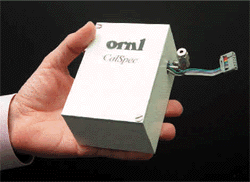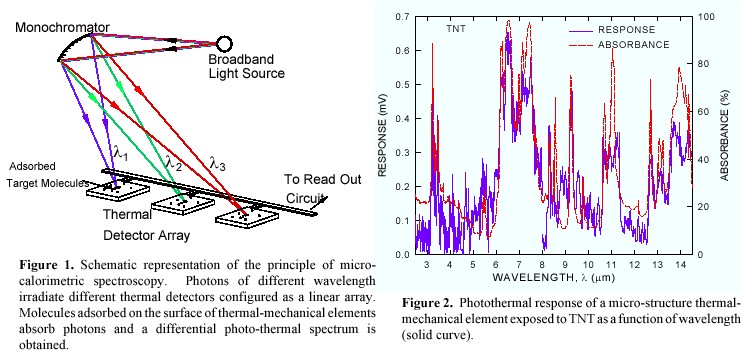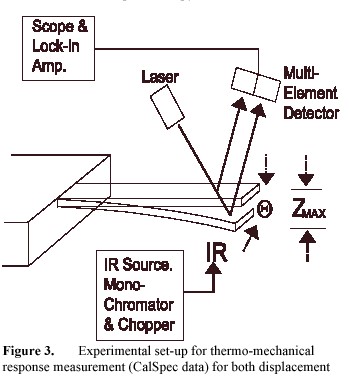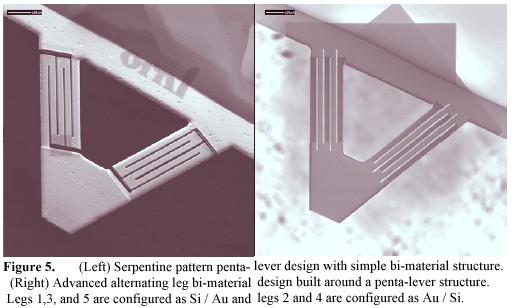The CalSpec-based approach is a novel absorption spectroscopy technique that may allow us to reach detection limits of one part per trillion. The principle behind this calorimetry spectrometry technique is depicted schematically in Fig. 2. Chemical detection using CalSpec occurs in a two-step process. In the first step, the target molecules enter the device and are allowed to interact with, and adsorb onto, the surfaces of ultrasensitive micromechanical thermal detectors. These detectors sense the sample's changes in temperature as it absorbs photons from an IR source. In the second step, a calorimetric (photothermal) spectrum is obtained by scanning a broadband wavelength region with the aid of a monochromator, which disperses photons according to their wavelenths. For wavelengths at which the target molecules absorb incident photons, heat is generated, causing a temperature change in those particular thermal detectors. In response to these temperature changes, the detectors produce a photothermal spectrum that indicates that the target chemical has been detected and reveals its concentration in air.

A critical element of CalSpec is the thermal detector. We have used recently developed micromechanical thermal detectors made from silicon nitride. We can modify and optimize these microstructures by using focused ion-beam (FIB) milling. In FIB an intense ion beam is precisely focused on parts of the microstructure to selectively remove material and produce a new shape.


